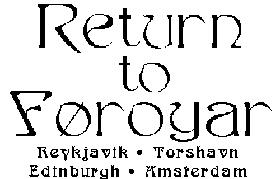
Return To Føroyar
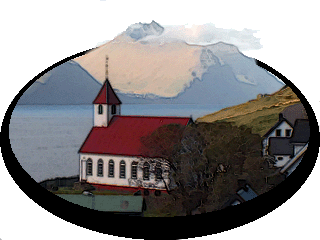

9 October 2016
The North Atlantic Arc Home
| Octoberrrrrrrrrrrrrrrrrrrrrrr |
| S | M | T | W | T | F | S |
| 1 | ||||||
| 2 | 3 | 4 | 5 | 6 | 7 | 8 |
| 9 | 10 | 11 | 12 | 13 | 14 | 15 |
| 16 | 17 | 18 | 19 | 20 | 21 | 22 |
| 23 | 24 | 25 | 26 | 27 |
 |
|
Sunday 9 October 2016--I seem to be running a little later every day, getting
out later in the morning than I'd planned, getting back to town later than I'd
meant to, staying out in the evening later than I should, getting up and out even
later the next day. I'll take a short touring day today to try to reset, visiting a
number of villages at the northern end of Eysturoy.
It has long been my habit, when out driving around, to play the iPod on shuffle, making my daily soundtrack a random selection of tunes from Scotland, England, Ireland, Norway, Sweden, Finland, Brittany, Andalusia, Québec, and other places, with a dash of '70s prog rock and a smattering of other odd things. Earlier this year, I played Rolling Home by Old Blind Dogs on the bus as I departed from Quebec City with Bobby's ski group, and after that, I decided to let all the songs play in alphabetical order. Seven months later, I have finished the back end of the alphabet, and am now up to the D's. The casual listener probably would not normally notice the difference between shuffle and alphabetical play, not most of the time, anyway. Five consecutive renditions of The Cruel Sister might tip one off. And this morning, there is a long string of Shetland tunes. The iPod ignores the articles "A" and "The" when alphabetizing, but it doesn't recognize Shetland dialect, and so I hear Da Bixter Rant, Da Bride's A Boanie Ting, three versions of Da Day Dawn, four of Da Slockit Light, and others. Shetland is Føroyar's nearest neighbor in the North Atlantic, and the two archipelagos share a Norse heritage, so you might think the music would resonate here. In fact, the musical traditions are very different--the type of fiddle tunes popular in Shetland simply don't exist in Føroyar, or haven't until fairly recently. Musical instruments would seem to have been an extravagance that never made it to these austere isles (or Iceland, either). So I'm left with an odd sense of cultural displacement as I drive north toward Eiði, a bit like the feeling of disorientation I get when I'm driving in one place but thinking about another, and try to pull my mind back to where I am. Speaking of extravagance, Eiði has two soccer pitches, one a few hundred yards outside the village of 670, a newer one tucked right in close. I looked at the place from across the strait the other day, on my way to Tjørnuvík, and now I look back the other way. After a poke around town, I depart on the road to the northeast, and get the opposing view of Risin og Kellingin, off Eiði's headland. The road passes beneath Slættaratindur, at 880 meters (2,890 ft) the highest peak in Føroyar. It is claimed that, under the right atmospheric conditions, it is possible to see the glacier Vatnajökull in Iceland, 340 miles away, from the summit. There does not seem to be any verification of this. A long spur road leads down to the village of Gjógv, which is frequently cited as one of Føroyar's most picturesque. The name means "gorge", a reference to the narrow little slash of a harbor. It seems to me that it's not the most practical place to land a boat, which is perhaps why Gjógv's population of about 50 is a quarter of what it was a half century ago. Near the village church stands a poignant fishermen's memorial, depicting a mother and two children looking out to sea for the husband and father who will not come home. Back up the spur I go to the shoulder of Slættaratindur, then down the switchbacking road to Funningur (pop ~70). Local legend has it that this was the first Norse settlement in Føroyar, dating to the early 9th century. Another long spur leads to Oyndarfjørður (pop~170). The putative tourist attraction here is two rinkusteinar, or rocking stones, which rock back and forth with the waves when the tide is right, which it isn't right now. I cross the bridge back to Streymoy and am back in my room at 4:30. Decide to have a short nap before dinner. Don't awaken until 8:00, and so have a late dinner, and am out too late again. Messed that up. Away tomorrow. Next |
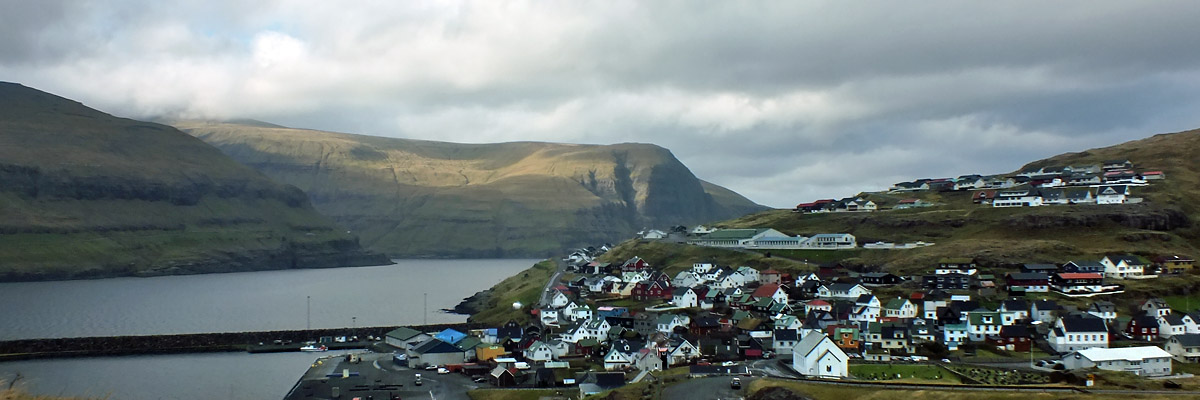 |
Eiði
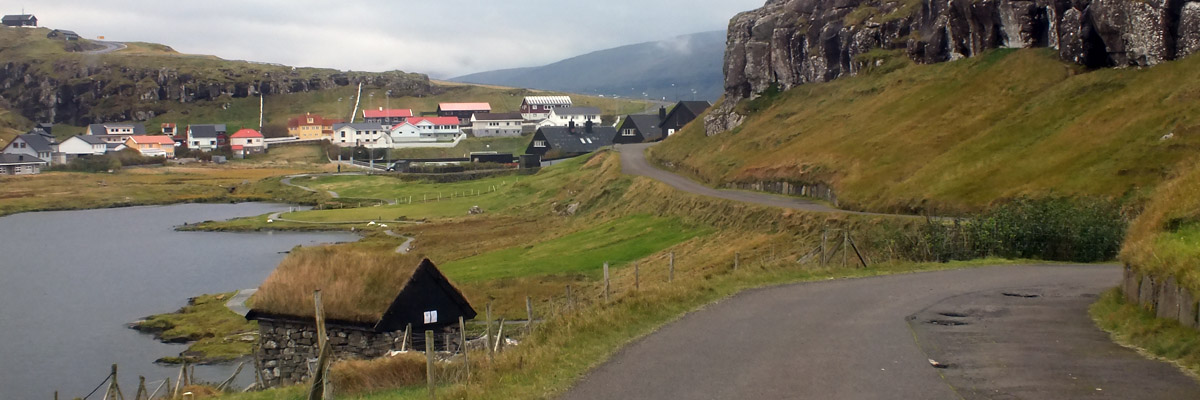 |
Eiði
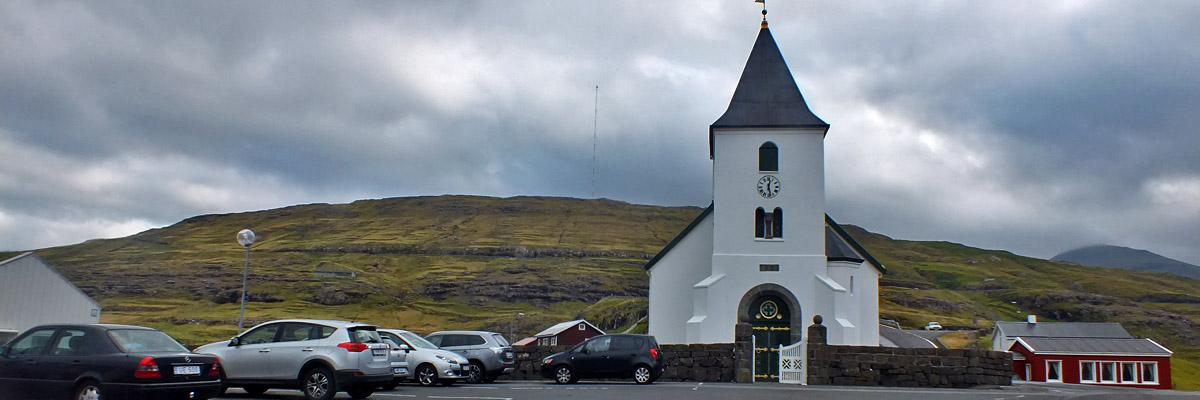 |
Eiði
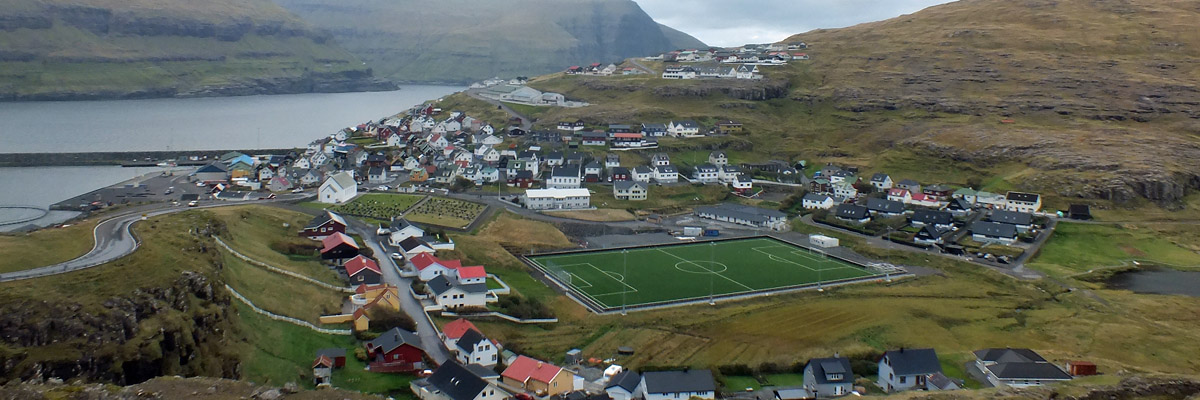 |
Eiði
 |
Risin og Kellingin
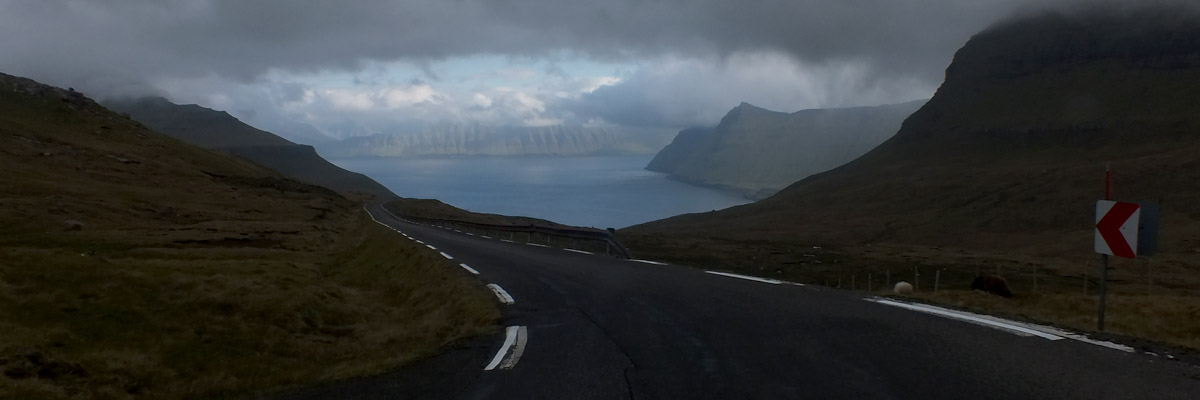 |
View Toward Kalsoy
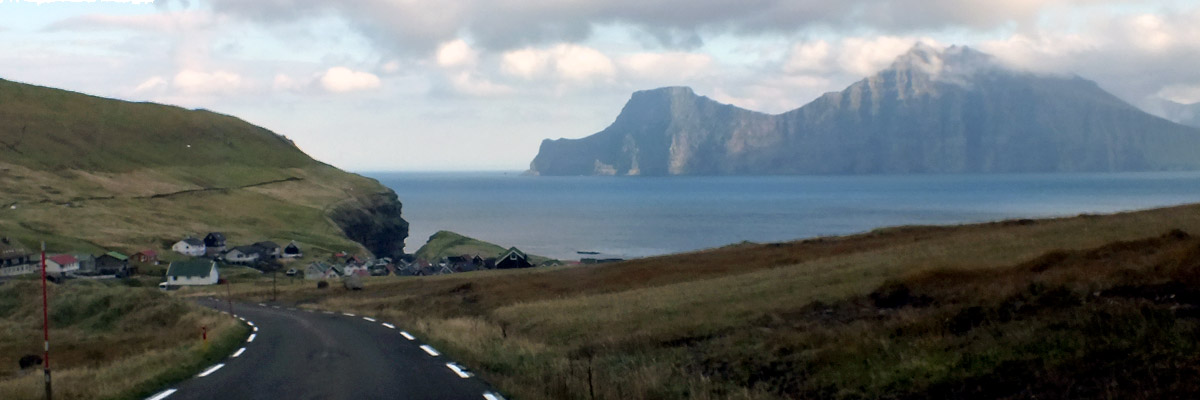 |
Gjógv
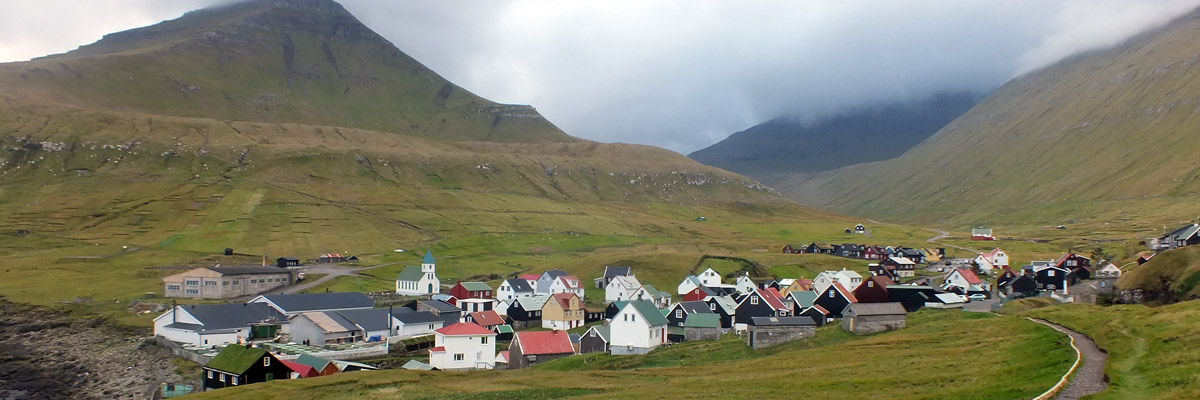 |
Gjógv
 |
Gjógv
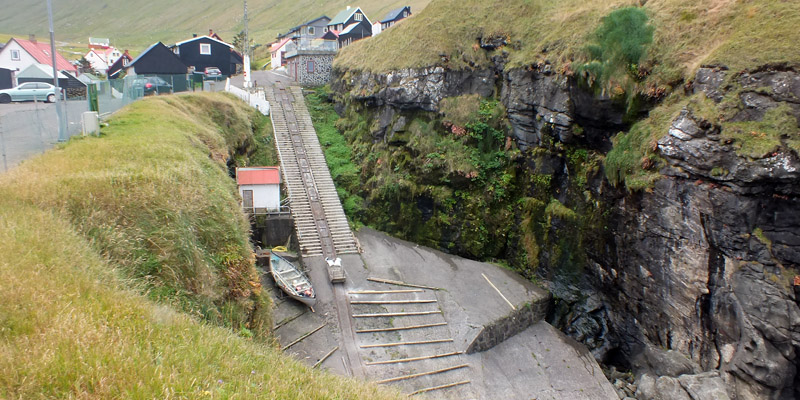 |
Gjógv
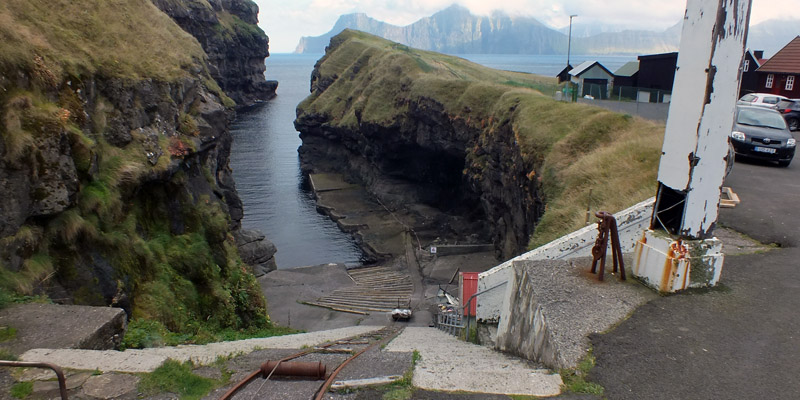 |
Gjógv
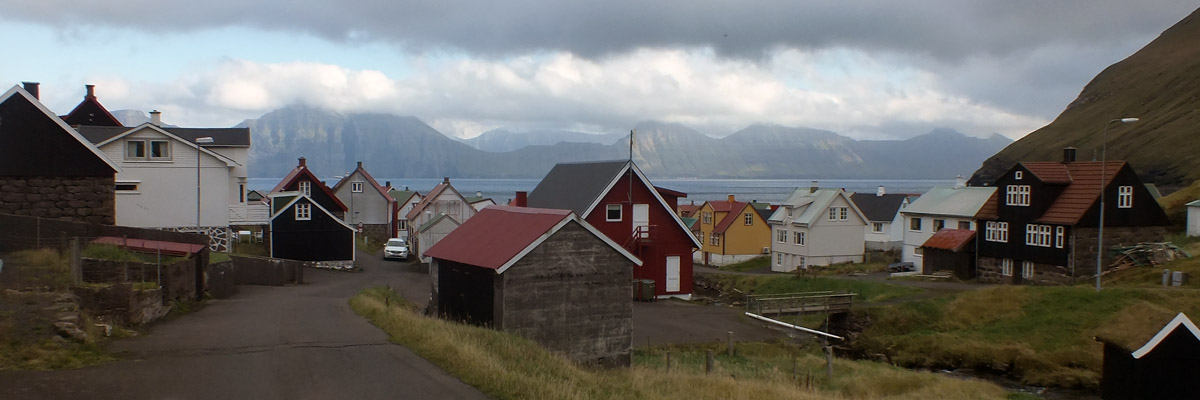 |
Gjógv
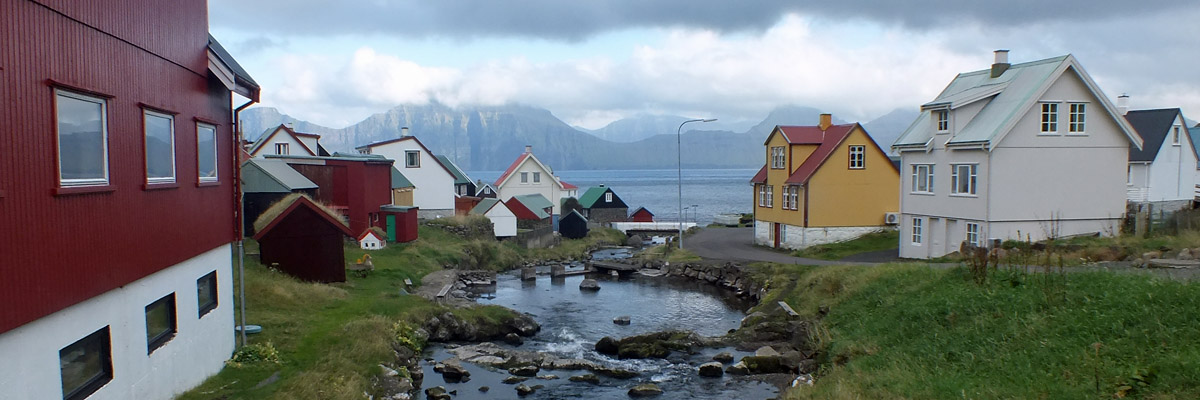 |
Gjógv
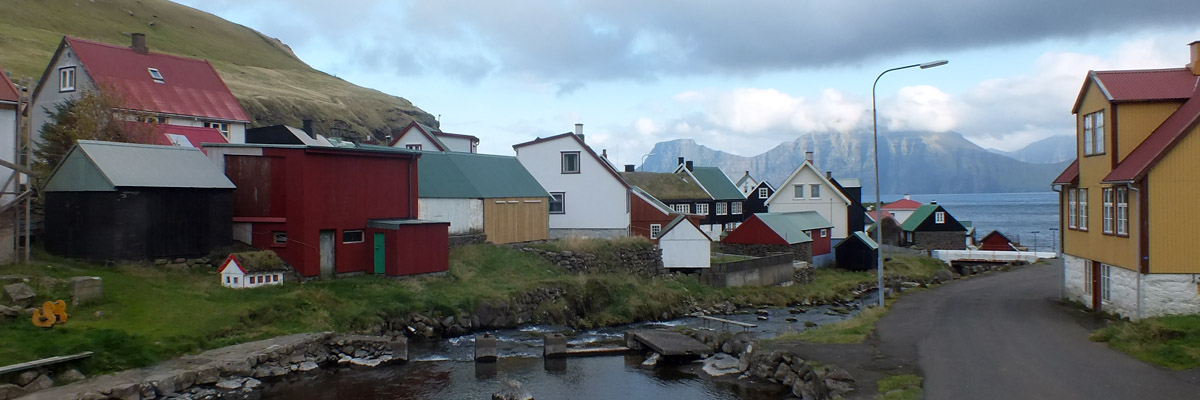 |
Gjógv
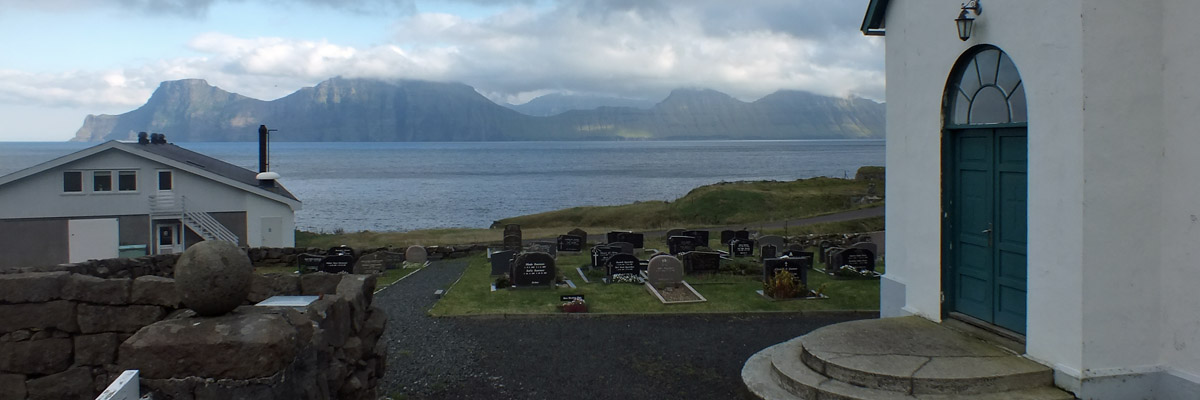 |
Gjógv
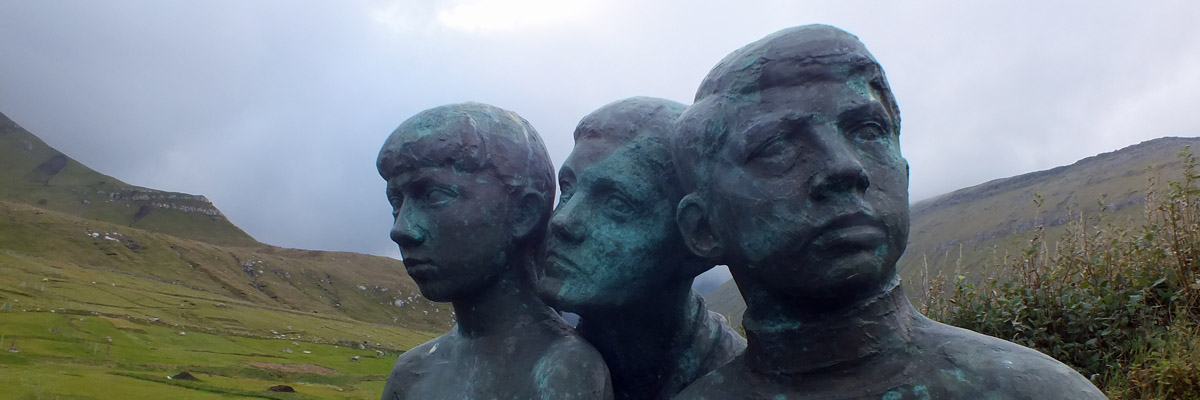 |
Gjógv
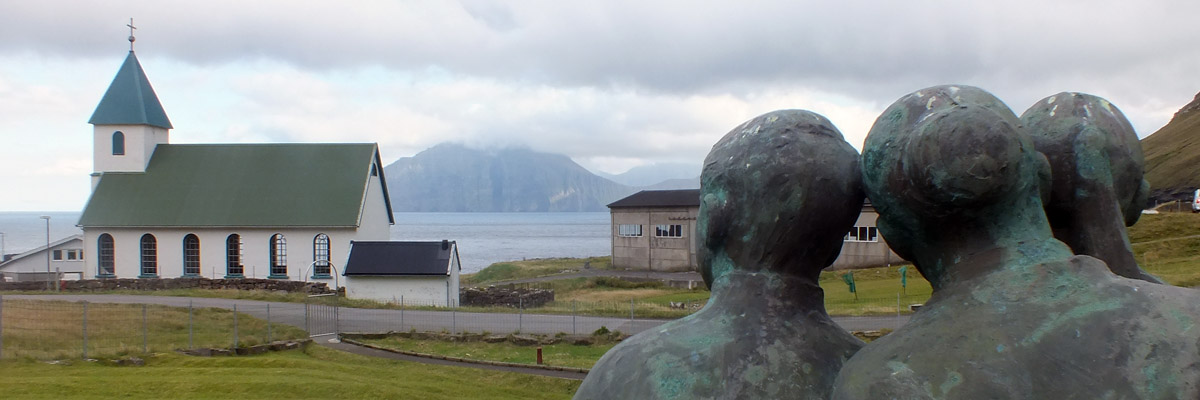 |
Gjógv
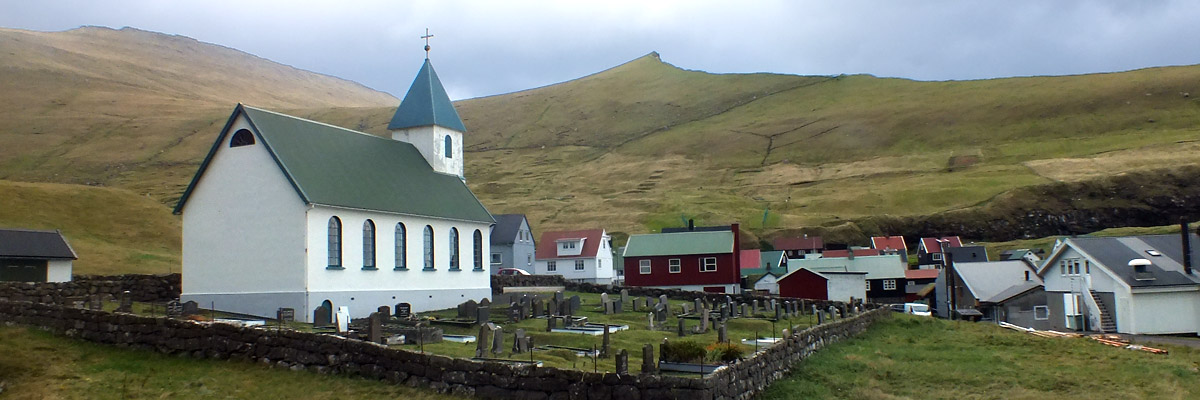 |
Gjógv
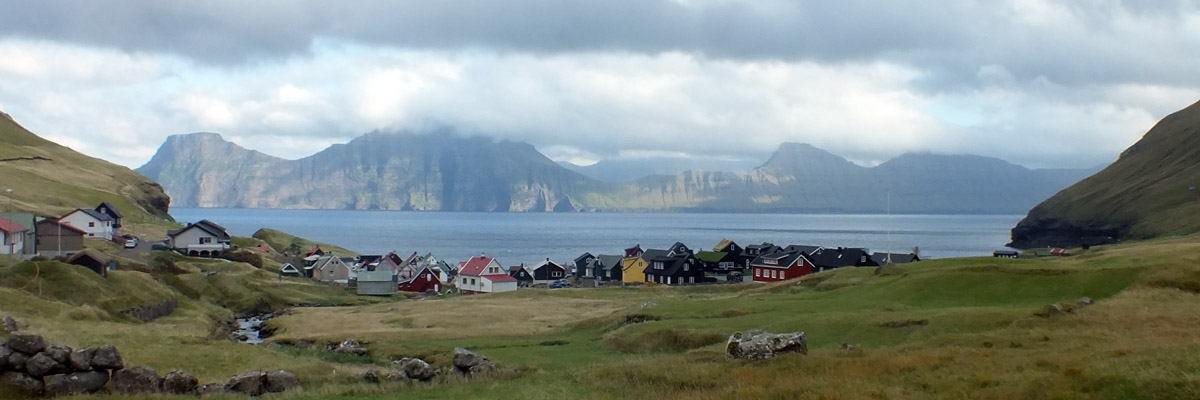 |
View From Gjógv To Kalsoy
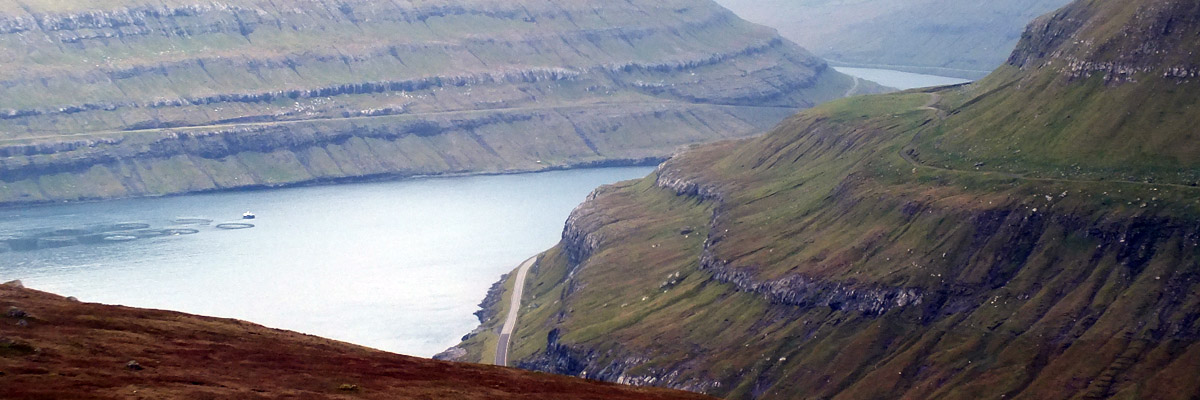 |
Funningsfjørður
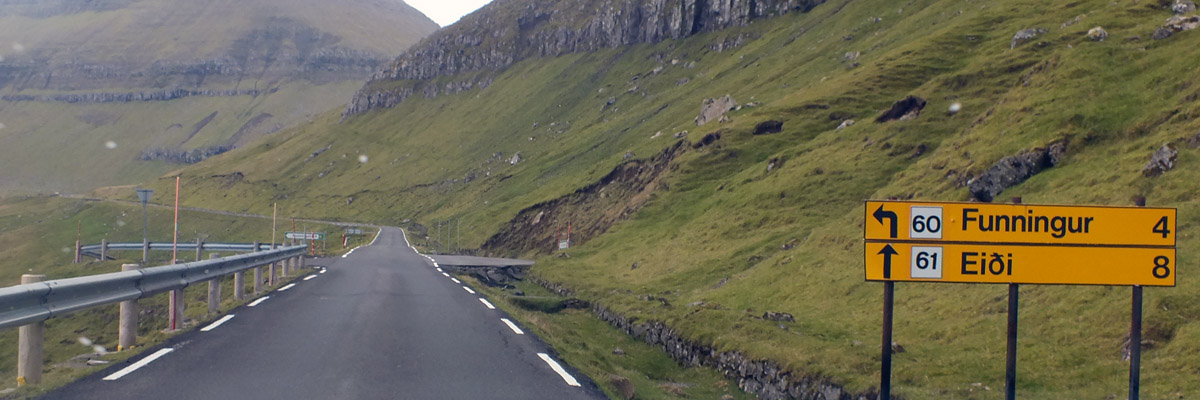 |
Junction
 |
Descent To Funningur
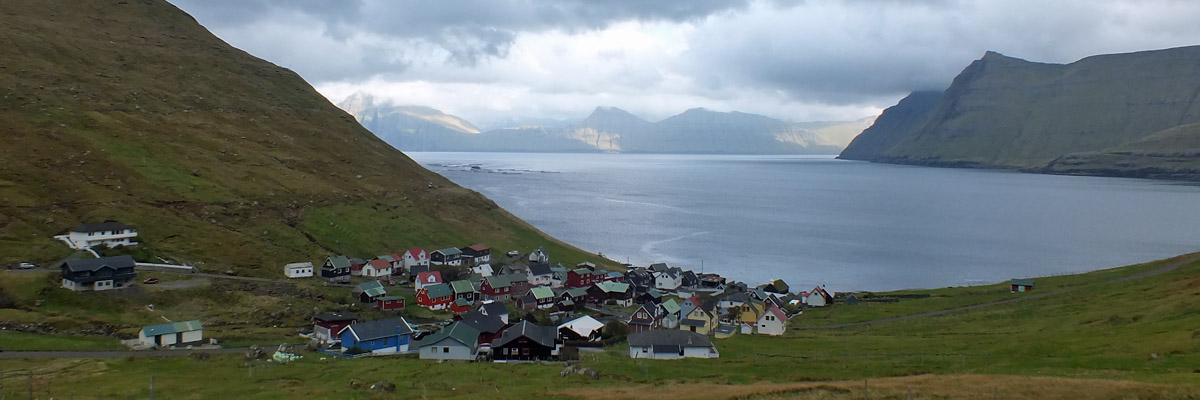 |
Funningur
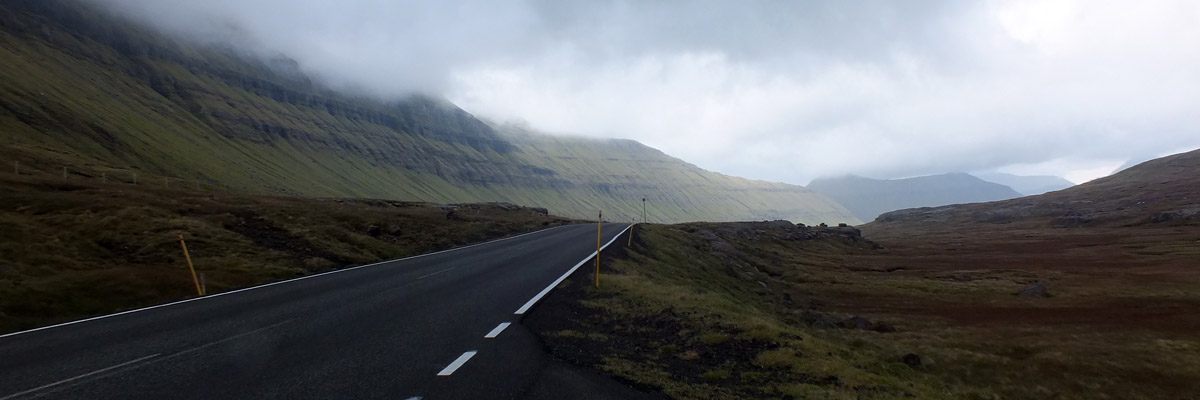 |
Ascent
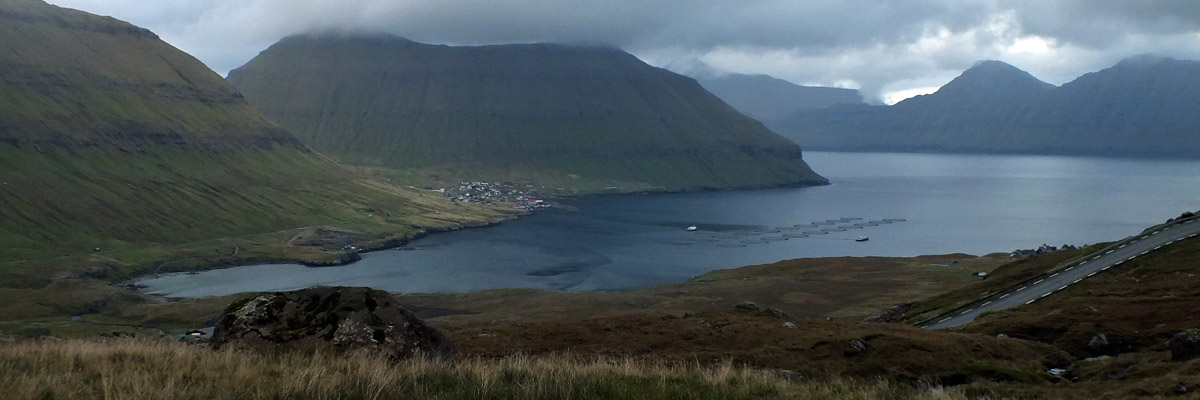 |
Oyndarfjørður
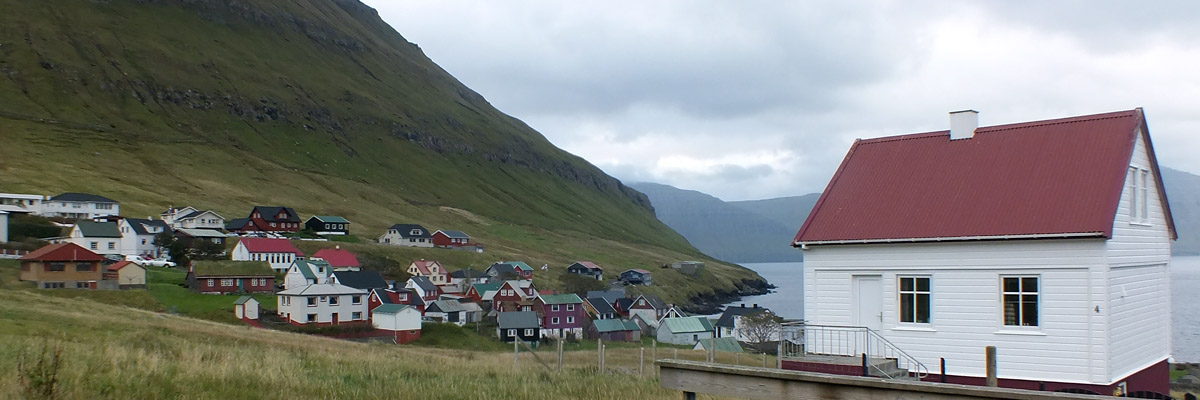 |
Oyndarfjørður
 |
Oyndarfjørður
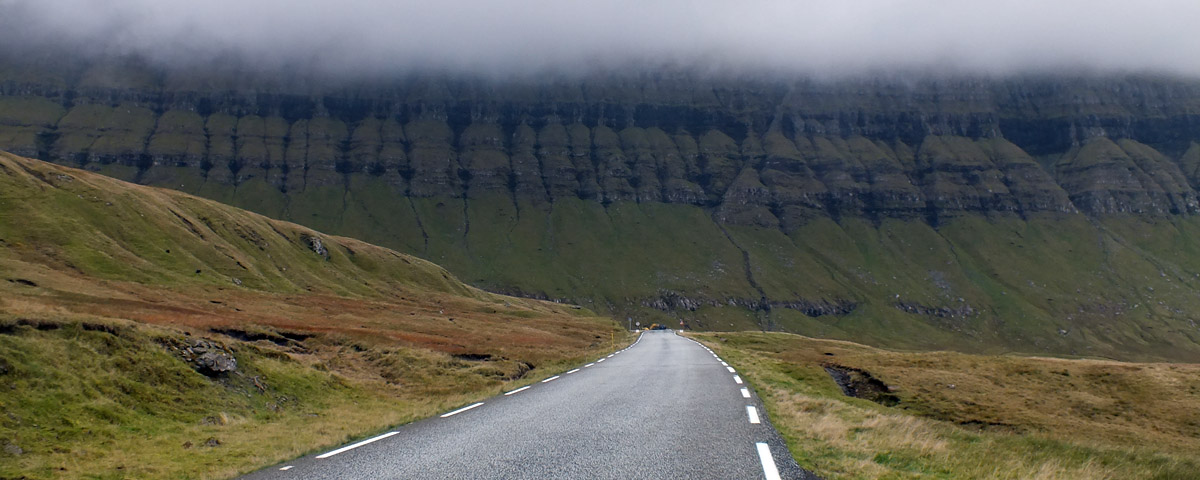 |
Leaving Oyndarfjørður
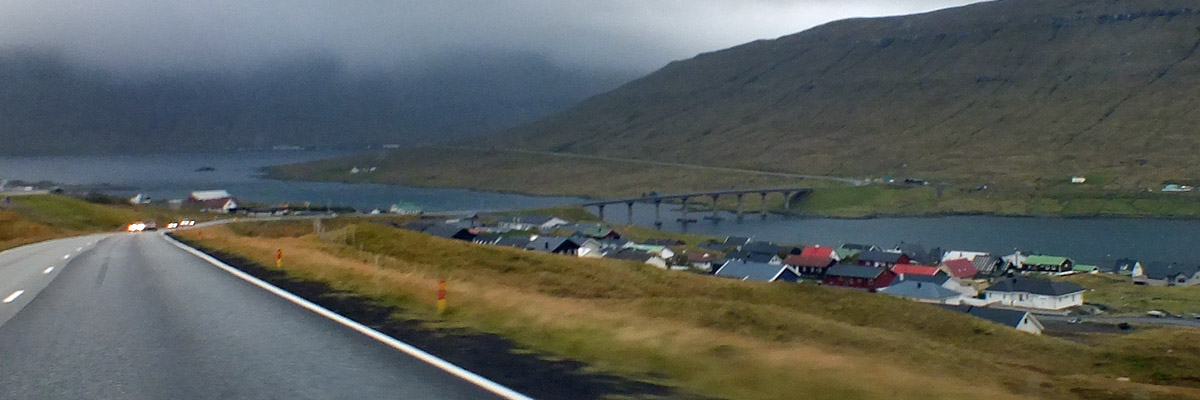 |
Brúgvin um Streymin
Next
| Octoberrrrrrrrrrrrrrrrrrrrrrr |
| S | M | T | W | T | F | S |
| 1 | ||||||
| 2 | 3 | 4 | 5 | 6 | 7 | 8 |
| 9 | 10 | 11 | 12 | 13 | 14 | 15 |
| 16 | 17 | 18 | 19 | 20 | 21 | 22 |
| 23 | 24 | 25 | 26 | 27 |
The North Atlantic Arc Home

Mr Tattie Heid's Mileage
Results may vary